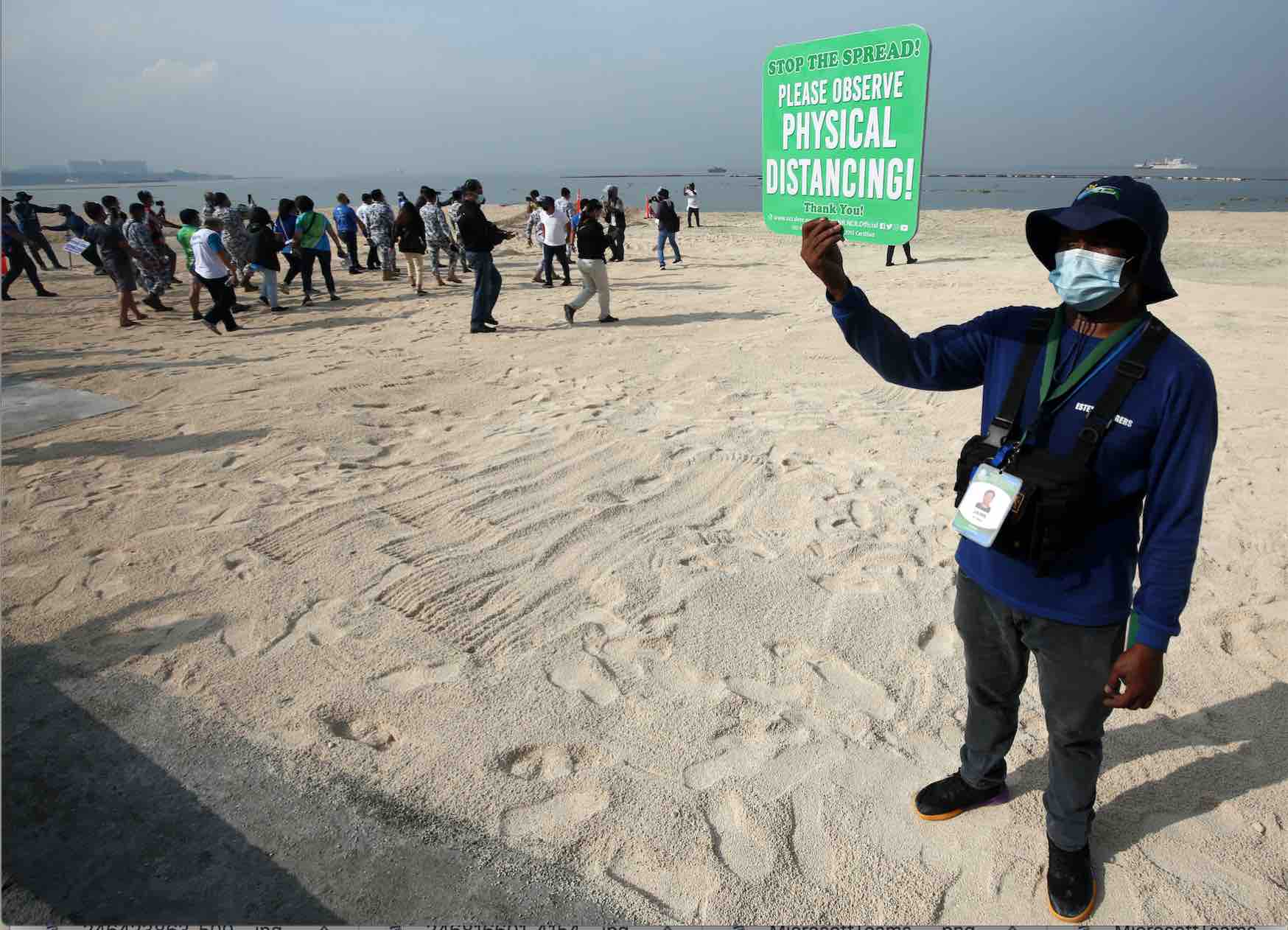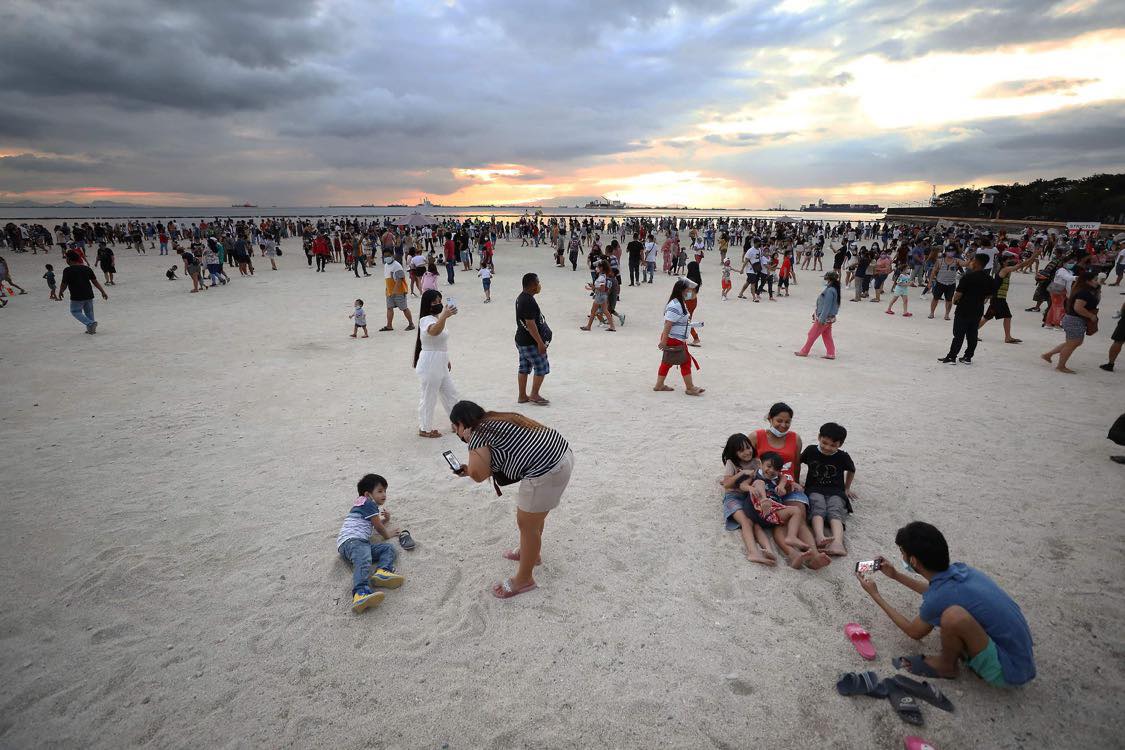Dolomite beach and our need for sunshine
Been reading up on beaches lately. Did you know that once upon a midnight dreary, while I pondered the weak and weary, that a trip to the beach was a mainstay in doctor’s prescriptions?
And why not? It can cure maladies from severe acne to foreign accent syndrome, if I may add. Happened during Britain’s Industrial Revolution, so I learned.
Bet you didn’t know that. In fact, the beach has become such a popular destination since the 18th century that one out of three beach bums would insist on visiting talcum-powder shores even if they can’t swim.
Too, did you know that a trip to the beach puts you within “arm’s reach” not only of much-needed sunshine, but 90% of the world’s volcanic activity? You gotta lava the warmth beaches offer the soul.
And since social media is riding the pink bandwagon, there are not one but four pink beaches in the country: Sila Island, Samar; Tikling Island and Subic Beach, Sorsogon; and Pundaguitan Beach, Davao Oriental.
Pink heaven on Earth, if you ask me.
So far as the Philippines and beaches are concerned, the Lonely Planet says the Philippines and “picture-perfect beaches go together like a bucket and spade.” Having a little over 7,000 islands makes the country a beach-bum haven, allowing for long stretches of paradise-happy coasts to calm our asphalt- and smog-weary minds.
Anyone who has found himself within the sandy escapes of Boracay’s shoreline well know it’s addicting. Yup, like some rich boy’s rumored beach-white cocaine habit. El Nido, of course, makes for a veritable Nirvana with its white coasts and steep karst cliffs.
The Las Cabañas Beach in the same area boasts of magnificent sunsets to which no Instagram shot will ever do justice in spite of the flimsiest fuchsia bikinis and mind-boggling vital statistics.
And I mean that. There’s also Ipil Beach, an island paradise fenced by cotton-soft sands and areas great for snorkeling.
With Manila being hailed as the Queen City of the Pacific, a veritable Paris of the Orient at the turn of the 20th century, Manila Bay became one of the most visited tourist destinations by the West in the early 1900s. Not exactly your sand-water attraction but great for sunset walks.

I recall watching a throwback YouTube video of Manila Bay where western women roamed the brick causeway in their gowns bearing lace parasols. Like some old moving picture of Paris or New York City with one notable exception: this one had the classic kalesa and historic Manila Bay as backdrop.
It was a vision of Manila and the Bay most people hardly know. Some people think of Maynila today as this ghetto caught between a botched progress report and a classic-ness no amount of fiscal budget can repair.
And what of Manila Bay? A pollution hotspot, by any standard, with plastic wrappers and bottles, Styrofoam containers, and human waste battling it out for naval supremacy. My bet, obviously, is on the poop.
Nonetheless, Manila is a city where its age-old scent can be easily remedied by a simple love of history. Manila Bay, for example, wasn’t only the site of a historic naval battles, it was—and still is—the best place to watch resplendent sunsets, and lovebirds making out a stone’s throw from a cockroach hole by the sea.
Then comes this administration’s dolomite beach, standing roughly 550 meters from the United States Embassy and costing the taxpayers P389 million at first, and another P265 million for the second phase of the Manila Bay rehabilitation.
The Department of Environment and Natural Resources (DENR) was quick to the draw, saying that the beach project’s aim is to promote “positive mental health.” While beaches do have that effect on most people, there are things that need raising.

The timing of the clean-up effort is but one of numerous controversies hounding the project: the new coronavirus pandemic. It’s been said that such amounts could’ve been used for widespread contact tracing and vaccine procurement.
Let’s not even go to where experts raised caution as to the dolomite’s potential threat to the health of the public and marine wildlife.
Of course, for most Filipinos trapped by one lockdown after another, the dolomite beach became a kind of curiosity, enough to bring them to the site the moment it opened its gates to the public.
Roy Cimatu of DENR naturally defines the influx of people as a show of support. But that couldn’t be all true for everyone, not when many who lurk in cyberspace think of the whole project as a bad joke.
One real problem can be found in the waters itself. Environmental protection agencies have repeatedly said that the quality of Manila Bay waters may have improved but only slightly, not significant enough to allow for swimming and bathing, let alone drinking.

Cimatu said in a Philippine Star report, “Bathing in the area is prohibited as the level of fecal coliform in Manila Bay has not gone down to 100 most probable number per 100 milliliters, the standard level acceptable for swimming and other contact recreational activities.”
Likewise, plastic pollution along Manila Bay’s mangrove and mudflat regions has reached disturbing proportions, so much so that an Oct. 5, 2021 report by The Guardian raised issues about the survival of adjacent communities and migratory birds in the area.
This 1,600-foot stretch of dolomite sand will remain controversial for years to come. That’s an absolute certainty because any chance at pogi points by the State will always be at loggerheads with a pandemic which may last us another 10 years.
In a country where an average 20 typhoons threaten its population, with at least one or two Category 5 storms (157-mile per hour winds) hitting the Philippines each year, we have more reason to fear the disappearance of the dolomite beach than whatever staying power we can give it.
Not only that, but rumors of corruption have assailed its creation from the start. This, above all other issues, might just hold back all attempts to recreate Manila Bay back to its pristine glory—pogi points aside.
Time wasted on a beach is always time well-spent, so beach bums say.
But the hundreds of millions wasted to rehabilitate one, at a time when such an amount can help secure a crumbling public health system, are nothing but a total waste.
In these dark times, we have little choice but to settle for sunshine by leaving incorruptible footprints in the sand.



